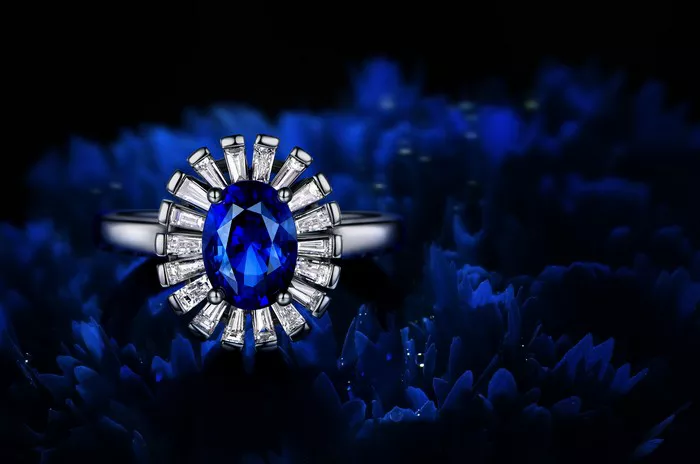Tanzanite and diamonds are both prized gemstones known for their beauty, rarity, and allure. However, when it comes to determining which gemstone is more valuable, several factors must be considered. In this article, we’ll explore the differences between tanzanite and diamonds, what influences their value, and whether tanzanite is indeed more valuable than diamond.
Understanding Tanzanite and Diamonds
Tanzanite is a relatively rare gemstone discovered in Tanzania in the 1960s. Renowned for its mesmerizing blue-violet color, tanzanite quickly gained popularity in the world of gemstones and jewelry. Tanzanite is a variety of the mineral zoisite and is prized for its exceptional clarity, brilliance, and unique coloration.
Diamonds, on the other hand, are among the most sought-after gemstones in the world. Formed deep within the Earth’s mantle under extreme pressure and temperature conditions, diamonds are prized for their hardness, brilliance, and unmatched sparkle. Diamonds are composed of carbon atoms arranged in a crystal lattice structure, giving them their characteristic transparency and durability.
Factors Influencing Gemstone Value
Several factors influence the value of gemstones, including rarity, color, clarity, cut, carat weight, and market demand. Let’s explore each of these factors and how they apply to tanzanite and diamonds:
Rarity: Tanzanite is considered relatively rare compared to other gemstones, with the majority of tanzanite production coming from a single source—the Merelani Hills in Tanzania. While diamonds are also rare, their availability is influenced by factors such as mining output, production technology, and stockpile releases by diamond producers.
Color: The color of a gemstone is one of the most critical factors in determining its value. Tanzanite’s unique blue-violet color is highly prized, with the most desirable stones exhibiting a vivid, intense hue with excellent clarity and saturation. Diamonds come in a variety of colors, including white, yellow, pink, blue, and even red. While colorless (white) diamonds are the most traditional and sought after, fancy colored diamonds, such as pink and blue diamonds, can command even higher prices due to their rarity and unique beauty.
Clarity: Clarity refers to the presence of internal characteristics, known as inclusions, within the gemstone. Tanzanite is often valued for its clarity, with eye-clean stones (those without visible inclusions to the naked eye) commanding higher prices. In contrast, diamonds are graded for clarity using a standardized system based on the visibility and nature of internal and external inclusions.
Cut: The cut of a gemstone plays a significant role in maximizing its beauty, brilliance, and overall value. Well-cut gemstones exhibit optimal proportions, symmetry, and polish, enhancing their sparkle and light performance. Both tanzanite and diamonds are available in a variety of cuts, including round, princess, oval, emerald, and pear shapes, among others.
Carat Weight: Carat weight refers to the size of the gemstone and is a significant factor in determining its value. Larger gemstones, whether tanzanite or diamonds, are rarer and thus more valuable than smaller stones. However, the price per carat tends to increase exponentially as the carat weight of the gemstone increases, meaning that larger stones can be significantly more expensive on a per-carat basis.
Market Demand: Market demand and consumer preferences also play a role in determining the value of gemstones. While diamonds have traditionally been the most sought-after gemstone for engagement rings and fine jewelry, tanzanite’s unique color and allure have garnered a growing appreciation among collectors and enthusiasts in recent years.
Is Tanzanite More Valuable Than Diamond?
When comparing the value of tanzanite and diamonds, it’s essential to consider the factors outlined above. While tanzanite is prized for its rarity, unique color, and exceptional beauty, diamonds continue to command premium prices in the market due to their enduring popularity, symbolism, and versatility.
In terms of rarity, diamonds are generally more abundant than tanzanite, with significant diamond deposits found in various parts of the world, including Africa, Australia, Russia, and Canada. However, certain colored diamonds, such as pink and blue diamonds, can be even rarer and more valuable than tanzanite due to their scarcity and desirability among collectors.
In terms of color, tanzanite’s vivid blue-violet hue is highly prized and can rival the beauty of the finest diamonds. Tanzanite’s unique coloration, combined with its exceptional clarity and brilliance, has contributed to its growing popularity in the world of gemstones and jewelry.
In terms of price per carat, diamonds generally command higher prices than tanzanite, particularly for colorless (white) diamonds with high clarity and excellent cut quality. However, certain fancy colored diamonds, such as pink, blue, and red diamonds, can be significantly more valuable than both tanzanite and white diamonds due to their rarity and unique coloration.
Ultimately, whether tanzanite is more valuable than diamond depends on individual preferences, market conditions, and the specific characteristics of the gemstones in question. While diamonds have long been considered the ultimate symbol of luxury and prestige, tanzanite offers a beautiful and affordable alternative for those seeking something unique and distinctive in their jewelry collection.
Conclusion
In conclusion, both tanzanite and diamonds are prized gemstones known for their beauty, rarity, and allure. While tanzanite’s unique blue-violet color and exceptional clarity have contributed to its growing popularity in the world of gemstones and jewelry, diamonds continue to command premium prices in the market due to their enduring appeal, symbolism, and versatility. Whether tanzanite is more valuable than diamond depends on various factors, including rarity, color, clarity, cut, carat weight, and market demand. Ultimately, both gemstones offer distinct advantages and appeal to different tastes and preferences, making them valuable additions to any jewelry collection.


